Resilient Infrastructure: For the Blue Economy
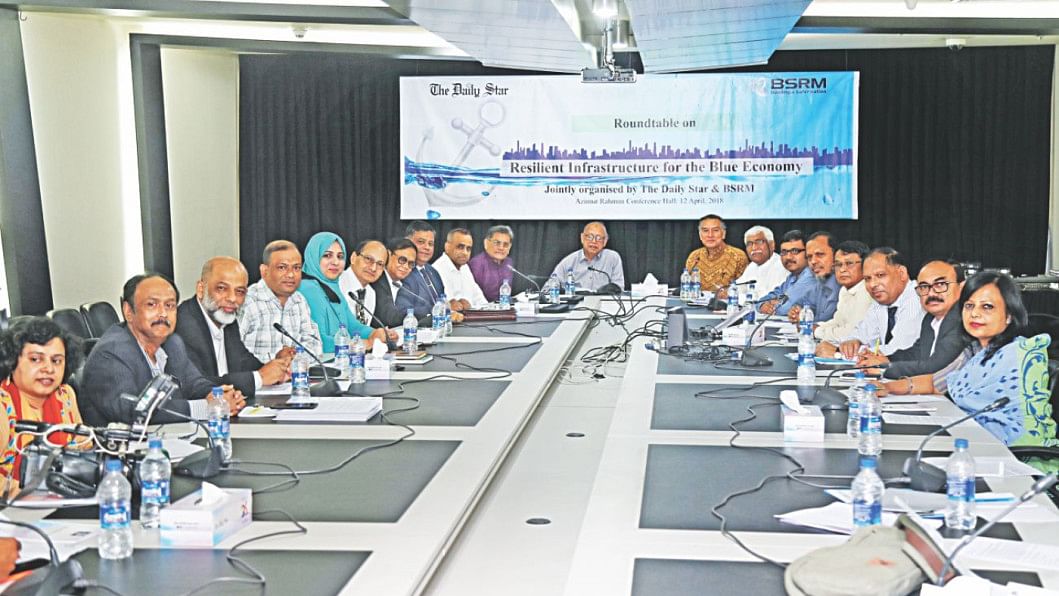
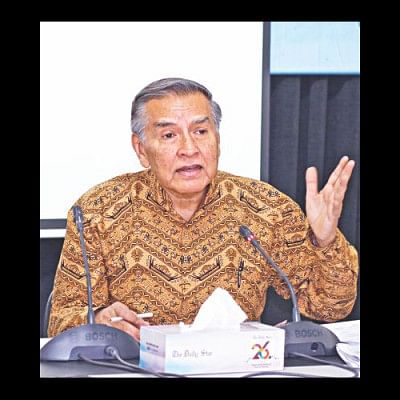
Mahfuz Anam
Editor & Publisher, The Daily Star
To reach the status of a developed country, Bangladesh has to put special emphasis on developing necessary infrastructure. The government is investing a lot in this sector. But what is the quality of these infrastructure? Earlier we had built a large number of cyclone shelters in the coastal regions that involved huge investments. Unfortunately, by 2005 most of these infrastructure had become hazardous. We did the right thing at the right time but because of some lacunae in our planning process we could not make our infrastructure durable and resilient.
With extended maritime boundary Bangladesh has huge potential of developing a blue economy which will help the country's march forward. It will essentially result in a construction boom in the coastal areas and perhaps throughout the country.
The objective of today's roundtable is to discuss how to ensure durability of these infrastructure. We have a building code. It does refer to various aspects of construction in the coastal areas. But it does not talk about corrosion which is a major threat to the durability of the infrastructures built in a coastal environment. Emphasising on the salinity aspect, we would like to discuss the need for a new or more specific building code that will give us resilient infrastructure in the coastal areas.
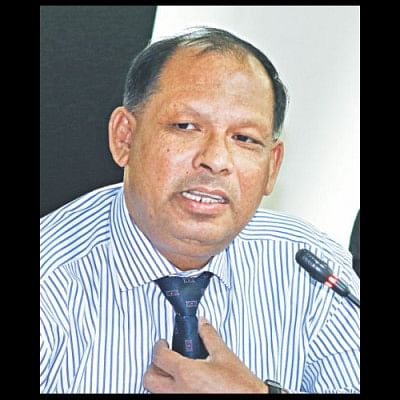
Commodore (Retd.) Mohammad Nurul Absar
Security Analyst and Maritime Expert
The sea has always been instrumental in defining the destiny of the world, be it for transportation or as a resource hub. Bangladesh has successfully resolved delimitation of its maritime boundary. The country is now also financially and technically capable of exploiting its huge maritime resources. Therefore, going towards the blue economy is the demand of the time.
The blue economy considers the oceans and seas as a development space with spatial planning that integrates conservation and sustainable use of the living and non-living resources. The scope of blue economy covers a lot of things such as fishing, extracting oil, gas and minerals, maritime trade and shipping, marine biotechnology and so on. A large number of infrastructure is required to develop a vibrant blue economy.
As the coastal areas are generally disaster-prone, the infrastructure in these areas will be susceptible to various types of hazards such as excessive rainfall, high wind speed, extreme temperatures, cyclones, floods, coastal inundation and salinity. We can't control hazards but we can definitely minimise vulnerability by building resilient infrastructure. Resilience means the ability to anticipate, prepare for and adapt to the changing conditions and withstand, respond to and recover rapidly from disruption.
Keeping the specific conditions of the coastal areas in mind we need to develop an integrated coastal management system. A coastal-zone-specific construction code should be a key component of this plan. We need to make a fine combination of ecological functioning, human behaviour and development works in the coastal areas.
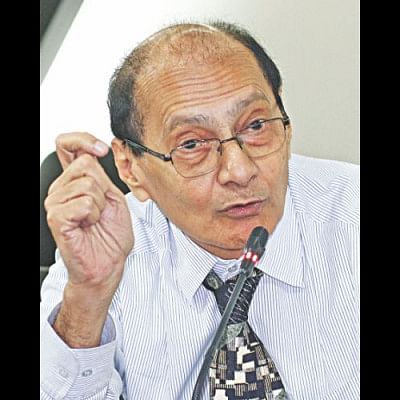
M Firoze
Head of Marketing and Product Development, BSRM
A large number of construction projects is going on in our coastal areas. Unfortunately, the corrosion factor remains neglected in these projects. I had the opportunity to see the tender and project documents of Rampal Power Plant where there is no mention of using corrosion-resistant construction materials for building the plant. I talked to Bharat Heavy Electricals Ltd.
(BHEL) who is the contractor of this project. They told me that if they use fusion bonded epoxy coated bar for preventing corrosion, the project cost will go up by BDT 200 crore. They also pointed to the tender document of the project formulated by PDB which does not mention anything about corrosion. The total cost of Rampal Power Plant is BDT 16,000 crore of which 50 percent will be spent for construction of civil infrastructure that will require huge amount of reinforcement. For example, 25,000 tonnes of reinforcement will be required only for building the cooling tower of the plant. If we neglect the corrosion factor the whole investment will be in danger. BHEL is constructing a similar type of power plant in Chennai where they have taken adequate corrosion-resistant measures but in Rampal they are not following these. Similarly, a Chinese company is building a power plant in Payra where they are using bare bars that are very vulnerable in saline environment. Our government agencies should take the corrosion factor very seriously. In India, Ministry of Road Transport and Highways has a circular which stipulates that if you construct something within 25 km of the sea, you have to follow certain construction rules and use specific construction materials for resisting corrosion. We need similar kind of regulation for building infrastructure in the coastal zone.
For Padma Bridge there is a national committee of local experts which is overseeing the project where they can guide the political leadership and give a second opinion about any construction decision. But there is no such body to look after ongoing huge construction works in the coastal areas. I would urge the government to form a national committee in this regard. This committee can guide the formulation of a construction code for the coastal areas.
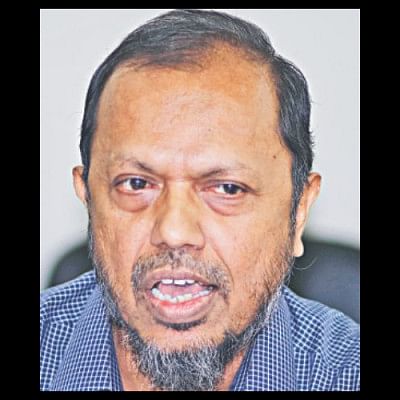
Dr Ishtiaque Ahmed
Professor, Department of Civil Engineering, BUET
Cyclone shelters in our coastal areas failed miserably in the saline environment as they were built using uncoated bars. India, back in the 1990s, made use of special reinforcement compulsory for protecting infrastructure in the coastal zone from corrosion. They also have clear construction guidelines for building structures in coastal areas. Countries like the US, Malaysia and Indonesia have also developed their coastal-zone-specific construction codes. Our existing building code focuses mainly on inland structures. There are some references to building constructions in the coastal environment but those are not specific and mandatory. We must formulate a coastal-zone-specific construction code that will ensure 80-100 years' longevity of the coastal infrastructure.

Abu Saleh Md Nuruzzaman
Superintending Engineer, Roads and Highways Department
When we undertake a development project we initially prepare a project profile which includes estimation of the total cost of the project. When a project goes into construction phase, it is difficult to make changes in its construction specifications as well as the cost. However, the government needs to be made aware of corrosion-resistant practices and solutions so that they can incorporate these things in tender and project documents.
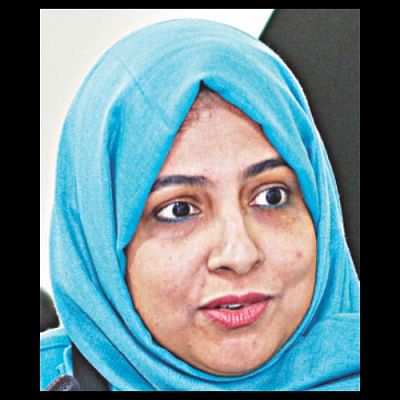
Fahima Shahadat
Head of Infrastructure and Technical Services, Lafarge Holcim Bangladesh Limited
In the Rooppur Nuclear Power Plant project, soil stabilisation was required, and for that the consultant German company suggested a certain type of cement. We took the challenge and successfully developed the solution. Currently, there are 4-5 cement companies in the country which can produce cement products of the same quality. It proves that the local market has the capacity to supply high-quality construction materials. It is very encouraging that big projects are being undertaken and our vast coastal belt is being explored. The local market can leap forward in terms of standards through these projects.
In the coastal area, particularly in Mongla, soil contains sulphur which affects infrastructure. Therefore, we need to use sulphate-resistant cement for construction in that area.
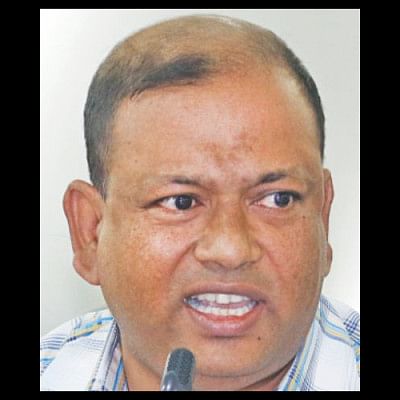
Dr MD Abdullah Al Mamun
Director, Bangladesh Road Research Laboratory
We have formulated a building code for buildings but we do not have proper code for roads and bridges. The existing code for roads and bridges has been copied from other countries without taking into consideration our local conditions.
We are always going for contingency and not doing advanced long-term planning. We also lack coordination and governance in our infrastructure planning. I fully agree with the idea that there should be an independent expert body which can advise the government about its infrastructure planning.
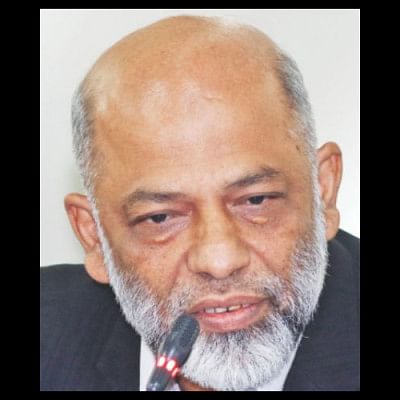
Dr Md Tarek Uddin
Professor, Civil and Environmental Engineering Department, Islamic University of Technology
Seawater is very hostile to concrete, particularly the steel inside the concrete. In our environment, one litre of seawater contains 35gm sodium chloride. Chlorides penetrate concrete and cause corrosion. Our construction design for coastal areas must address the corrosion factor; otherwise we will never be able to build resilient infrastructure there. The biggest drawback in our design is that we only focus on load and ignore durability. If we look at the examples of the developed countries we will see that they put top priority on durability of a structure. The very first chapter of the building code prepared by American Concrete Institute is on durability. We should learn from their examples and give durability the highest priority in designing any structure.
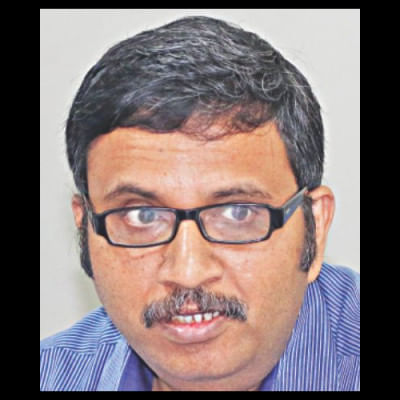
Dr AFM Saiful Amin
Professor, Civil Engineering Department, BUET
The need for sustainable development, available technological options, affordability, economic merits, and long-term versus short-term investment will be the key words to address when we write durability specifications by following appropriate infrastructure code while appreciating the geographical diversity of Bangladesh, including its marine environment. Yet, we do not have any maps of airborne salinity in Bangladesh. We also do not have any detailed studies on the aerosol content that describe the airborne salinity. So we do not have any need assessments either. Research on this issue has been ongoing in BUET, in cooperation with Japan, but it does not cover our coastal areas. We have to seriously think about both types of salinity. Waterborne salinity and its permeability in soil are becoming aggravated in the country. They are creeping upwards and proceeding to northern areas. Therefore, supply of safe drinking water should be an integral part of our infrastructural planning, as it will be a major challenge in the saline-prone areas.
We need to think beyond our existing coastal zone because we only have the possibility of expanding our land toward the Bay of Bengal. We should also seriously consider the future alignment of our existing and planned infrastructure, which will be connected to the extended region. Soil stabilisation is the key to bringing new lands into use.
Nevertheless, our existing code for construction (the Bangladesh National Building Code) covers only a small portion of infrastructure, mainly buildings. We do not have any proper code of our own for bridges, roads or other types of infrastructure either. We also need specific construction codes for infrastructure in coastal areas. Therefore, we should revise and broaden the scope of our codes to elaborately address corrosion issues. Besides the use of epoxy-coated bar following appropriate procedure and precautions, there are other corrosion-resistant solutions such as using dense/less permeable concrete as well as concrete with larger concrete cover.
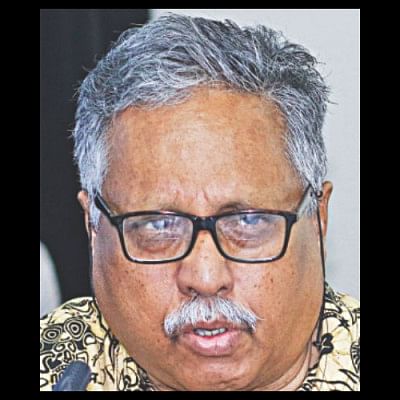
Dr Ainun Nishat
Professor Emeritus, BRAC University
Blue economy is a standard word. It is clearly defined in SDG 14. Unfortunately, there are two different bodies for handling SDG 14 and blue economy in the country. I don't understand why the foreign ministry has been given charge of blue economy. We have a coastal zone policy but it does not have any guardian. We need to sort out these institutional issues related to management of the ocean and the sea; otherwise we will not be able to build up our blue economy.
The whole world is taking the oceans very seriously because they think that if food production drastically reduces due to climate change, oceans can be the source of food for the world. But we are not paying proper attention to ocean resources. We have not been able to develop our capacity to harvest resources from the ocean. We do not even have any survey of our marine resources. We need to seriously think about resource management under the blue economy.
Ecosystem of our coastal belt is changing rapidly. The entire Satkhira is now affected by salinity which has reached Gopalganj. Polders, the first line of defence for coastal communities against tidal surges, have become almost ineffective as the regulators and sluice gates have been corroded. Population growth rate in Khulna, Satkhira, Bagerhat and Borguna is negative as people are migrating out of these areas. In the future, disasters such as cyclones and storm surges will increase along with sea level rise. All these will affect the local infrastructure. Therefore, we must take into account the changing ecosystem of the coastal area when building infrastructure in those areas.
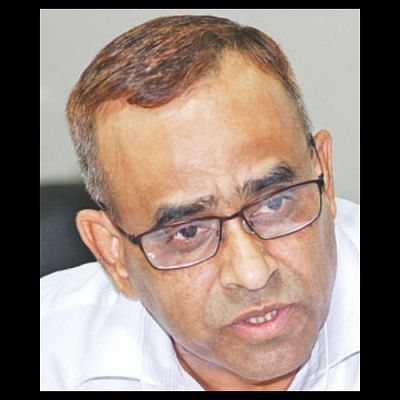
Rear Admiral ASM Abdul Baten
Founder Vice Chancellor, BSMRMU
To create knowledge and human resources for blue economy, the government has established Bangabandhu Sheikh Mujibur Rahman Maritime University (BSMRMU) and National Oceanographic Research Institute (NORI). BSMRMU has signed MoUs with Shanghai Maritime University and Dalian Maritime University for higher studies and research. Now, we need to create a strong collaboration between these academic institutions and industry.
We do not see ourselves as a maritime nation or a maritime community. We need to make people aware of their maritime identity.
In order to protect the coastal ecosystem, maritime spatial planning is required. There should be a governance plan and central body to oversee our overall blue economy affairs.
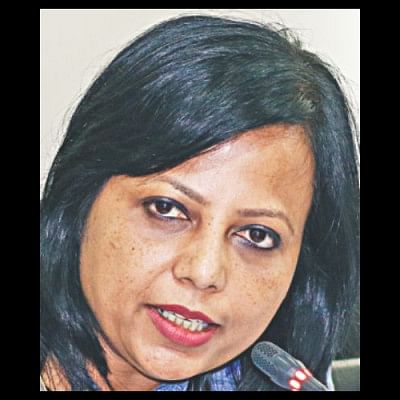
Dr Ishrat Islam
Professor and Head, Urban and Regional Planning Department, BUET
There are 19 districts in our coastal zone. We do local level planning for individual districts. But we do not have any integrated regional planning for the whole coastal belt. There should be coordination among all the projects undertaken in the coastal region. It will ensure optimum utilisation of our resources. The main goal of blue economy is to create employment and the private sector will lead the growth drive. Therefore, private sector should be made part of the coastal development plan.
There is no regulating body to ensure implementation of BNBC . It is said that the code is meant for the professionals but who will hold them accountable?

Dr Ahsan H Mansur
Executive Director, Policy Research Institute
The real benefit of blue economy will come from proper management of our coastal line. Currently, productivity of coastal areas is very low. Our study shows that per acre rice productivity in the southern areas is one-third of the upper districts like Bogra. These areas are also the worst sufferers of climate change impacts. These areas are being depopulated rapidly as people are migrating from there. To harness the potential of blue economy we have to retain people in the coastal areas by creating employment opportunities for them. Therefore, coastal zone development should be given top priority. A large number of development projects are going on in the coastal region such as ports, power plants, special economic zones, LNG terminals, refineries and so on. There should be proper planning to integrate these projects and make the best use of them.
The government has a Delta Plan. It was developed by Dutch consultants. They have expertise in managing delta. The Delta Plan has many dimensions including extraction of land from sea, development of coastal zone, mitigation of environmental impacts and so on. We need strong cooperation with the Dutch government and other international experts to successfully implement our Delta Plan.
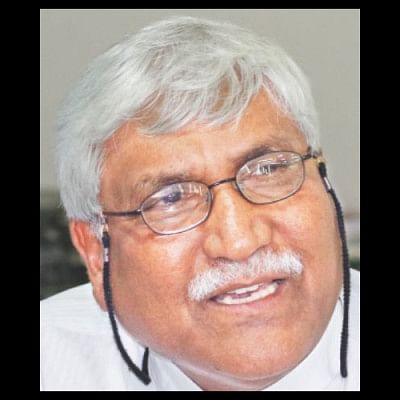
Dr A Atiq Rahman
Executive Director, Bangladesh Centre for Advanced Studies
Our idea of coastal area will change dramatically due to climate change. By 2070-90 half of the coastal districts will disappear. Infrastructures of those areas will be under severe threat from climate change. Therefore, when we talk about resilience we have to consider the climate change factor very seriously. We need transformative resilience which means after achieving resilience we have to maintain that. It requires long-term and sustainable planning. We need to think about alternative ways of living.
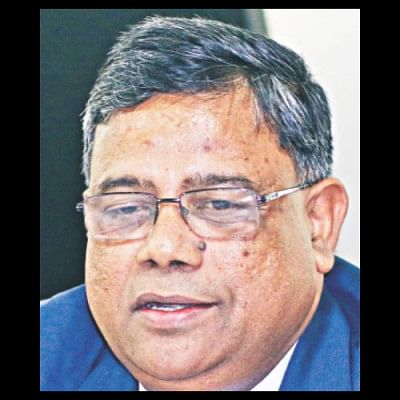
Rear Admiral M Khaled Iqbal
Vice Chancellor, BSMRMU
There is a concept called Portland economic development. China's Shanghai and India's Sagarmala are two great examples of this development model. We are going to implement this model in Chittagong. It involves a large number of infrastructure including ports, freight corridor, dedicated economic corridor, roads, railways, floating LNG terminal and so on. The government is already building a tunnel under Karnaphuli River. An economic corridor is going to be built from Mirsharai to Maheshkhali. The private sector is also developing various types of infrastructure in that region. Therefore, the time has come for us to have a separate building code for the port sector.
Climate change related incidents will rise in the coming years. We need to think about whether we can incorporate provision of advanced allowance in BNBC for tackling climate change effects on infrastructure.
Geological Survey of Bangladesh is doing digital terrain mapping. It should include the mapping of flood and surge prepared by the meteorological department. Our wind maps need to be regularly updated. Regional and local climate model needs to be set up so that we can assess extreme events. These maps and models should be incorporated in the BNBC.
We have already started offshore engineering department in BSMRMU. Next January we will launch our harbour and river engineering department.
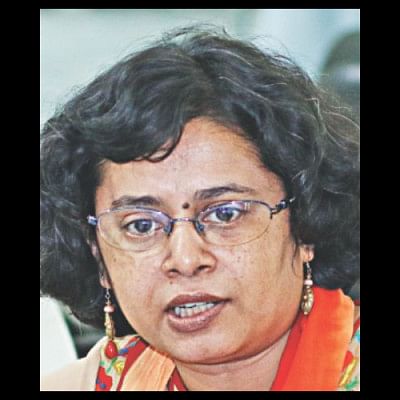
Dr Lailufar Yasmin
Professor, Department of International Relations, University of Dhaka
When we talk about building resilient infrastructure for blue economy, we also need to think about the actors, both national and international, who can help us build those infrastructure. We need to find ways to increase Bangladesh's leverage and invite them to come here with some concrete investment proposals.
As part of knowledge generation and dissemination, we should learn from the coastal population about the challenges they are facing every day and what they see as solutions to these problems. Their views must be reflected in all the policies regarding the coastal zone.
We need to formulate a maritime policy for harnessing the potentials of blue economy. Maritime policy is different from maritime strategy.
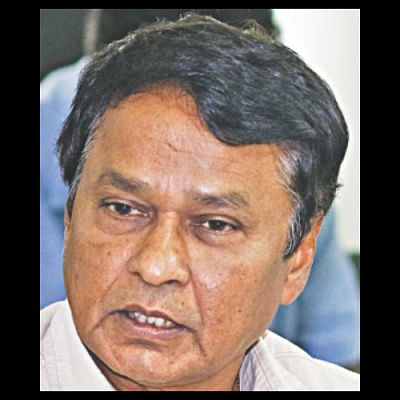
Dr Sujit Kumar Bala
Professor & Director, Institute of Water & Flood Management, BUET
We need to introduce coastal engineering in our engineering universities to build human resources who will gain the expertise in construction on or near the coast, as well as the development of the coast itself.
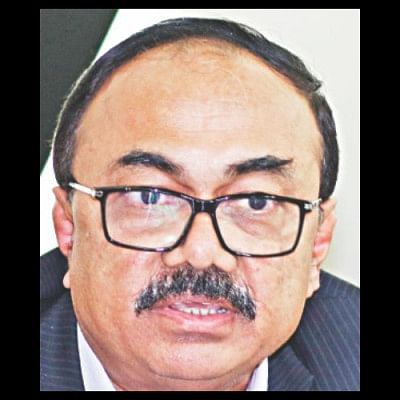
Mohammad Ayub
Executive Member, BEZA
To harness the potential of blue economy the government is building 100 export processing zones (EPZs). In developing these areas, we are facing various types of construction challenges, some of which have been discussed in today's roundtable. I want to highlight the issue of developing skilled manpower for blue economy. We appointed a local consultant to design a 18km-long embankment in Mirsharai. At the implementation stage, it was found that the basic design was faulty. As a result, the whole project has been delayed. Now we are redesigning it. Again, we asked the local contractors to do dredging in the Bay of Bengal but they failed to do that. We had to go for international bidding. Therefore, development of skilled human resources should be an integral part of the overall coastal zone development plan.
We have formulated building rules for EPZ following BNBC. Based on today's discussion, I think we need to modify the rules to cope with saline environment and make the infrastructures in EPZs more resilient. Besides building resilient infrastructure, we need to seriously think about business resilience and continuity plan in case of disasters.
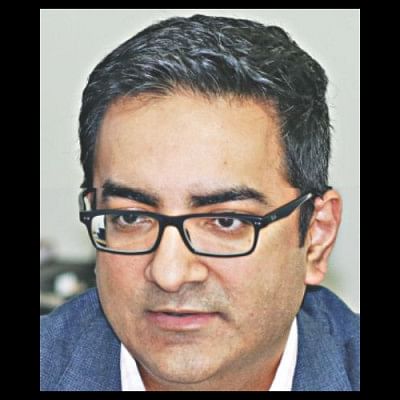
Syed Afsor H Uddin
CEO, PPP Authority
We have to monetise the blue economy. This is not about the different opportunities of using blue economy in the coastal areas but how we can best utilise our limited maritime space. Should there be a tourism zone or an economic zone? We have to take the decision by analysing where the biggest value addition can be made.
We generally look for the cheapest tender which does not always give resilient infrastructure. We should go for the concept of value for money which refers to optimum combination of upfront cost and lifecycle cost.
Blue economy is not just about buildings. It involves different types of infrastructure such as roads, ports, embankments, power plants and so on. Therefore, we should formulate a national infrastructure code which will cover this whole gamut of infrastructure required for blue economy.
Globally, the private sector is driving investment in blue economy. In our 7th Five Year Plan, 77 percent investment is made by the private sector. Therefore, we should seriously consider their role in building resilient infrastructure, thus fostering the growth of our blue economy. Banks and insurance companies are also closely linked to this endeavour. If the banks' credit process incorporates resilience testing as part of their value for money, it will add another dimension to our efforts to build resilient infrastructure. Similarly, long-term resilience risks need to be considered from insurance perspective and insurance companies can be a key player in mitigating those risks.
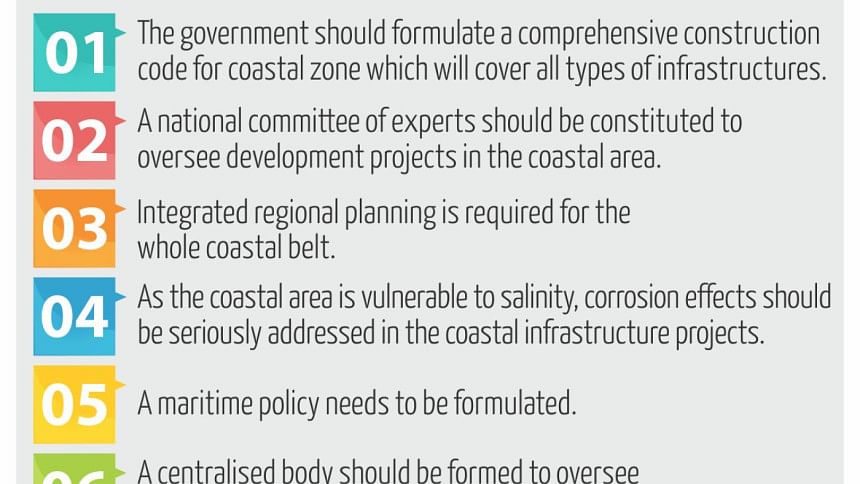

Professor AMM Safiullah
Vice Chancellor, Ahsanullah University of Science & Technology
It is unfortunate that corrosion-resistant practices are not being followed in critical infrastructure projects like Rampal Power Plant. The government should immediately look into this issue.
Although BNBC provides some guidelines on how to construct buildings in a saline environment, it does not specifically address the situation of the coastal zone. Our building code was formulated in 1993. We are yet to get an updated version of this code. Once we have an updated version, we have to consider formulation of a code for infrastructure in the coastal areas. The construction code for coastal infrastructure has to address issues like flood level, cyclone surge, salinity and corrosion, quality of materials and so on. We cannot formulate a suitable construction code by copying from others. We need to do a lot of research to understand our local environment and develop solutions that fit the specific conditions. We need to develop an effective code of practices and only then will we be able to prepare a good construction code. Finally, building good infrastructure is not enough; we have to properly maintain it.

 For all latest news, follow The Daily Star's Google News channel.
For all latest news, follow The Daily Star's Google News channel. 


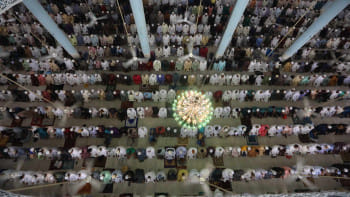
Comments